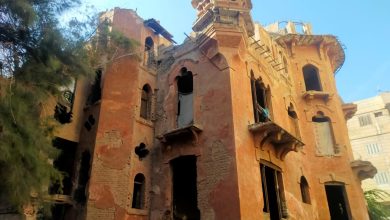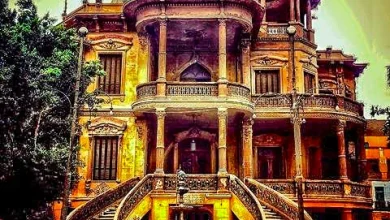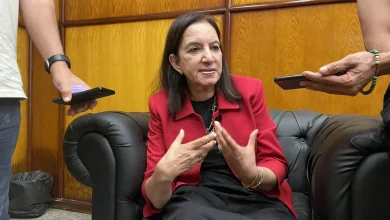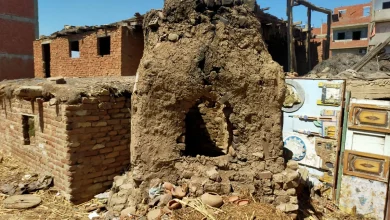
When one door closes, attention turns to other doors that were there but were not visible before. In cultural centers, there is always a small space for big dreams waiting for the public to discover them. Perhaps the cultural centers threatened with closure in the Gharbia governorate did nothing more valuable than believing in the talents of its young people.
In the villages of Al-Gharbia, in the corners of the Ministry of Youth and Sports clubs, community associations, and libraries, the dreams of young people are growing as a temporary alternative to the seven cultural centers and three libraries that are scheduled to close. In these villages, there are voices that want to sing, hearts that breathe the air of the stage, and perhaps hands that send sheets of paper to be transformed into the most beautiful drawings our eyes have ever seen. There is always an opportunity, but no matter how many alternatives there are, nothing can replace the “culture houses of the Ministry of Culture in Egypt.”
The birth of a dream in a cultural center
Don’t believe that the Kafr El-Zayat Cultural Center could ever be closed. Although it has not offered a variety of activities in recent years, it recognized the acting talent of Nour Sami and always nominated her for provincial competitions.
Nour Sami, a 10-year-old girl from the village of Kafr Mashla in the Kafr El-Zayat district, is interested in art and aspires to be a theater actress capable of expressing something “beautiful and non-existent” in contemporary theater. She was very saddened by the idea of closing the cultural center that nurtures and nurtures her talent, even if it was only during the summer vacation.

Youth clubs: a cultural landmark
Youth clubs in rural areas are a key alternative to cultural centers when they are closed. They offer all kinds of activities to help young people pass the time and pursue their hobbies. They also organize many competitions that develop and help discover talent, in addition to regular sports.
In the village of Al-Qarshiyah, in the center of Al-Sinta, the Al-Qarshiyah Youth Club stands as a bulwark against young people falling into the void of social media and becoming immersed in it. It offers several activities such as karate, soccer, tennis, combat sports, and memorization of the Holy Quran. It also holds regular training sessions to teach Arabic calligraphy, according to Mortada Wajid, general supervisor of cultural activities at the center.
The youth club in the village of Ashnawi offers workshops to teach handicrafts such as crochet, embroidery, and knitting. It also holds short story and poetry competitions and promotes literary skills and a love of reading in the summer. In addition, it organizes trips at nominal prices to heritage and historical sites in various governorates, according to what Fouad Rahmi told Bab Masr.

In the village of Katama, in the center of Basyoun, the youth club is a central meeting point for children and young people from the village and neighboring villages, especially in the summer. Abdul Raouf al-Sayed told Bab Masr that the club offers various educational and artistic activities, such as coloring and wall painting workshops. It also holds educational meetings with community associations to discuss social issues and different ideas.
School libraries: a cultural meeting point
School libraries and Al-Azhar institutes play a unique educational role in the absence of cultural centers. They promote reading and instill it in the minds of young people.
Mohammed Abdullah, librarian at the Abu Hamar Preparatory Institute in Basyoun, says that the library is open to all students during the summer vacation, as well as to other institutes. This is supervised by the Al-Azhar district as an activity to motivate them to continue their studies with enthusiasm in the coming year.
Amira Khairat, librarian at Jamal Nassar Elementary School in the village of Mit Hawi, confirms that the library is stocked with books that nurture values in young people and teach them various skills. It is open throughout the year to all students free of charge, whether they are from within the school or outside.Youth clubs are a hallmark of culture

Sustainability Center for Handicrafts
In the village of Hanoun, in the Zafta district, there is a “Sustainability Center” for teaching handicrafts such as knitting, embroidery, crochet, doll making, accessories, macramé, leatherwork, and more.
The center focuses on teaching these arts to children due to the high demand for them in the governorate and to empower and integrate them into society, enabling them to preserve their heritage, as explained by Sanaa Mohammed, one of the center’s employees.
Civil society organizations in Gharbia also play an important role in promoting a culture of diversity, developing skills, and encouraging talent. There are also some organizations that focus on cultural and artistic issues on a regular and effective basis, such as the Voice of Egyptian Youth Association in Gharbia and the Nahda Youth Association in Tanta.
Ahmed Abdel Sattar, general coordinator of the Voice of Egyptian Youth Association, told Bab Al-Masr that the association focuses on cultural affairs and developing the talents of children and young people in the villages of Gharbia and its hamlets. It also holds workshops, training courses, and cultural caravans for these villages, such as the recent caravan to the village of Hessa Shabshir in the Tanta district.
Safe spaces: art and culture
The Nahda Shabab Masr Association focuses its cultural activities on writing and supporting talented individuals. It also teaches them various arts, such as poetry and storytelling, and encourages them to read more from the age of five, intensifying its activities during the summer holidays.
According to Iman Jamil, one of the trainees, other recreational arts include painting, coloring, and photography.
At a time when safe spaces for art and culture are dwindling, with a cultural center threatened with closure and talent eager to flourish, youth clubs are opening their doors and offices are welcoming children who are passionate about reading. Culture continues to breathe in the villages of Gharbia governorate despite limited resources. What matters is not the number of activities or workshops, but their effectiveness and the belief in children’s right to express themselves.
Read also:
When the roads become a means of survival: Stories from the heart of Tel al-Haddadin in Tanta





Hi, this is a comment.
To get started with moderating, editing, and deleting comments, please visit the Comments screen in the dashboard.
Can you be more specific about the content of your article? After reading it, I still have some doubts. Hope you can help me. https://accounts.binance.com/si-LK/register-person?ref=LBF8F65G
Can you be more specific about the content of your article? After reading it, I still have some doubts. Hope you can help me.
Can you be more specific about the content of your article? After reading it, I still have some doubts. Hope you can help me. https://www.binance.info/register?ref=IXBIAFVY